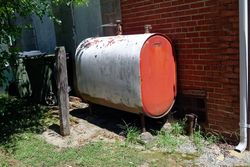What You Need to Know About Underground Tanks for Heating Oil

If your home relies on heating oil for warmth in the winter, you likely store it in a tank that’s either above or below ground. While it may seem more convenient to use an underground tank that you won’t have to look at, this can pose a more serious risk. Both types of tanks can leak, but an underground tank may face higher amounts of contamination and increased costs if a leak occurs. Here’s a more detailed look at what you need to know about these tanks.
Potential Risks
Most heating oil tanks last about 15 to 20 years. If your unit is approaching this age, it may be at risk of developing a leak. Afterward, you’ll have to hire a cleaning service to handle the contaminated soil and water. Plus, you’ll have to pay to repair or replace the tank itself, which your homeowners insurance may not cover.
 Additionally, oil vapors from the leak can have serious health effects on your family. They may experience dizziness, nausea, headaches, and disorientation. If the symptoms are ignored, prolonged exposure can cause more serious health issues, such as coma or death. The environment may also experience a devastating impact from the leak, as it can spread through soil and into groundwater.
Additionally, oil vapors from the leak can have serious health effects on your family. They may experience dizziness, nausea, headaches, and disorientation. If the symptoms are ignored, prolonged exposure can cause more serious health issues, such as coma or death. The environment may also experience a devastating impact from the leak, as it can spread through soil and into groundwater.
How to Prevent Problems
Fortunately, even if your home has an underground tank, you can take a few steps to ensure it doesn’t leak. For example, hire licensed professionals for a yearly inspection. They will run tests on soil and water samples and determine if a leak is occurring. You can also purchase an insurance policy that covers damage from leaks.
Knowing the risks of underground heating oil tanks will help you make the right decision to keep your home safe. When you need fuel delivery, the experts at Alaska Petroleum in North Pole have you covered. If you decide to remove your underground tank, this oil company even offers top-notch products to keep your home warm with efficiency. To learn more about their services, call (907) 488-2575 today. You can also find more information on their website.
About the Business
Have a question? Ask the experts!
Send your question

